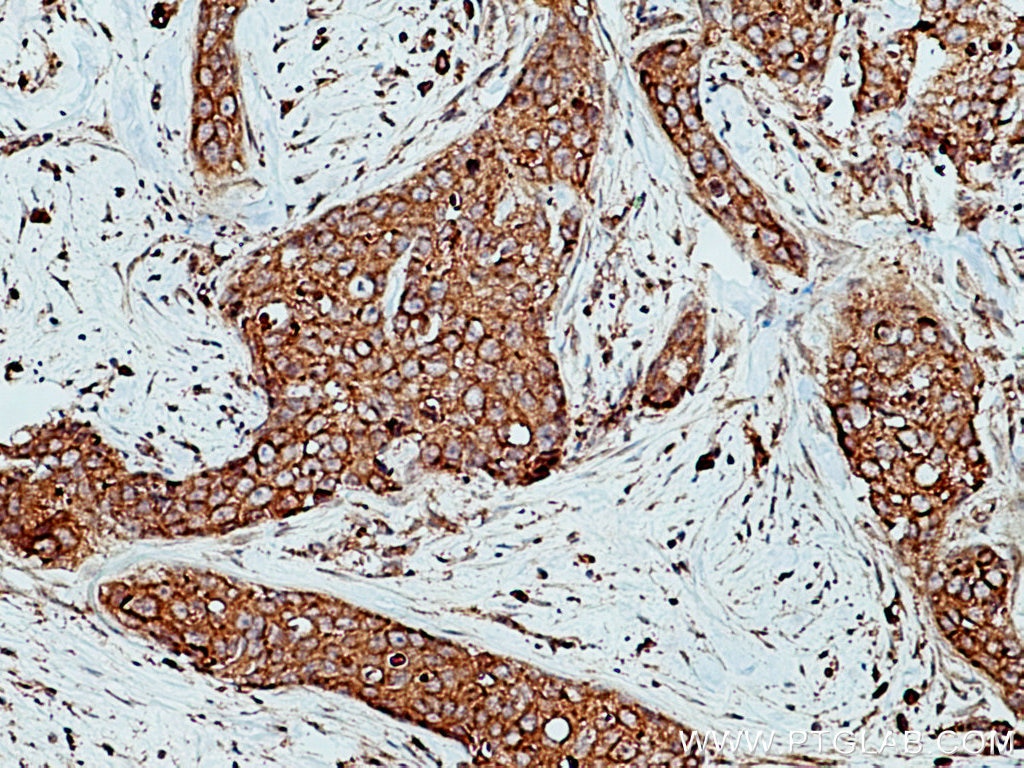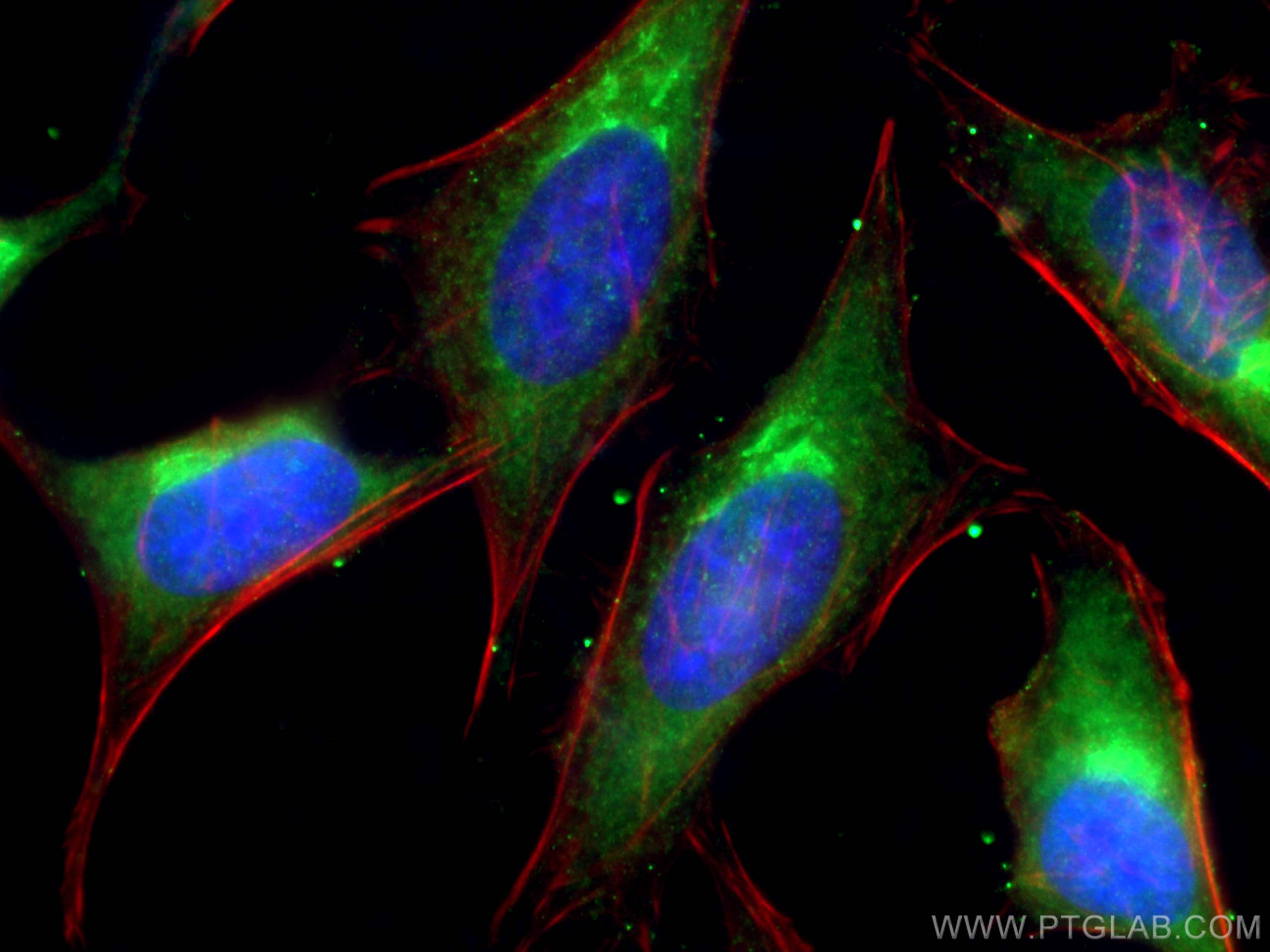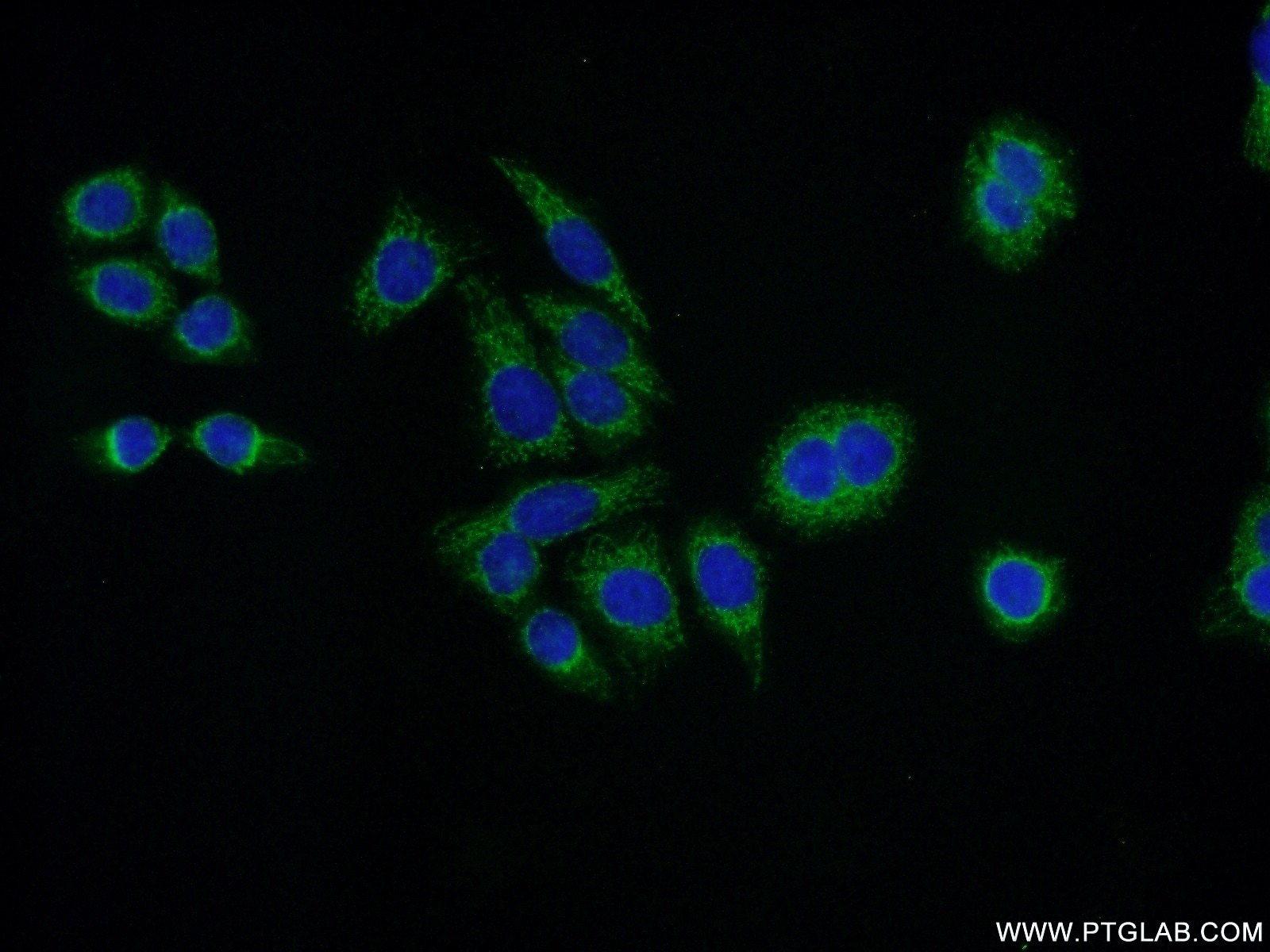Validation Data Gallery
Tested Applications
| Positive WB detected in | mouse kidney tissue, HEK-293 cells, rat kidney tissue |
| Positive IHC detected in | human breast cancer tissue, human cervical cancer tissue, human kidney tissue Note: suggested antigen retrieval with TE buffer pH 9.0; (*) Alternatively, antigen retrieval may be performed with citrate buffer pH 6.0 |
| Positive IF/ICC detected in | HeLa cells |
Recommended dilution
| Application | Dilution |
|---|---|
| Western Blot (WB) | WB : 1:500-1:1000 |
| Immunohistochemistry (IHC) | IHC : 1:50-1:500 |
| Immunofluorescence (IF)/ICC | IF/ICC : 1:50-1:500 |
| It is recommended that this reagent should be titrated in each testing system to obtain optimal results. | |
| Sample-dependent, Check data in validation data gallery. | |
Published Applications
| KD/KO | See 1 publications below |
| WB | See 6 publications below |
| IHC | See 1 publications below |
| IF | See 1 publications below |
Product Information
12804-1-AP targets VPS26A in WB, IHC, IF/ICC, ELISA applications and shows reactivity with human, mouse, rat samples.
| Tested Reactivity | human, mouse, rat |
| Cited Reactivity | human |
| Host / Isotype | Rabbit / IgG |
| Class | Polyclonal |
| Type | Antibody |
| Immunogen | VPS26A fusion protein Ag3391 相同性解析による交差性が予測される生物種 |
| Full Name | vacuolar protein sorting 26 homolog A (S. pombe) |
| Calculated molecular weight | 38 kDa |
| Observed molecular weight | 38 kDa |
| GenBank accession number | BC022505 |
| Gene Symbol | VPS26A |
| Gene ID (NCBI) | 9559 |
| RRID | AB_2215033 |
| Conjugate | Unconjugated |
| Form | Liquid |
| Purification Method | Antigen affinity purification |
| UNIPROT ID | O75436 |
| Storage Buffer | PBS with 0.02% sodium azide and 50% glycerol , pH 7.3 |
| Storage Conditions | Store at -20°C. Stable for one year after shipment. Aliquoting is unnecessary for -20oC storage. |
Background Information
In mammals, there are two paralogues of yeast Vps26, VPS26A and VPS26B (PMID: 16190980). VPS26 is a component of the retromer complex composed of VPS26 (VPS26A or VPS26B), VPS29, VPS35, SNX1, and SNX2. VPS26A and VPS26B subunits define distinct retromer complexes (PMID: 21920005). The retromer complex is important in recycling transmembrane receptors from endosomes to the trans-Golgi network (TGN).
Protocols
| Product Specific Protocols | |
|---|---|
| WB protocol for VPS26A antibody 12804-1-AP | Download protocol |
| IHC protocol for VPS26A antibody 12804-1-AP | Download protocol |
| IF protocol for VPS26A antibody 12804-1-AP | Download protocol |
| Standard Protocols | |
|---|---|
| Click here to view our Standard Protocols |
Publications
| Species | Application | Title |
|---|---|---|
Cell Metab Phospholipase PLA2G6, a Parkinsonism-Associated Gene, Affects Vps26 and Vps35, Retromer Function, and Ceramide Levels, Similar to α-Synuclein Gain. | ||
bioRxiv Noncanonical roles of ATG5 and membrane atg8ylation in retromer assembly and function | ||
Elife Noncanonical roles of ATG5 and membrane atg8ylation in retromer assembly and function | ||
Autophagy RAB21 controls autophagy and cellular energy homeostasis by regulating retromer-mediated recycling of SLC2A1/GLUT1 | ||
Int J Mol Sci The Prognostic Value and the Oncogenic and Immunological Roles of Vacuolar Protein Sorting Associated Protein 26 A in Pancreatic Adenocarcinoma
| ||
Ann Neurol Retromer proteins reduced in Down syndrome and the Dp16 model: impact of APP dose and preclinical studies of a γ-secretase modulator |








